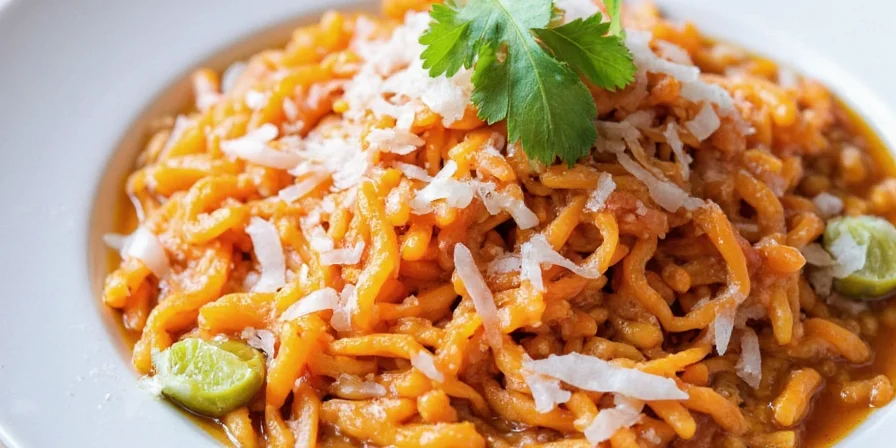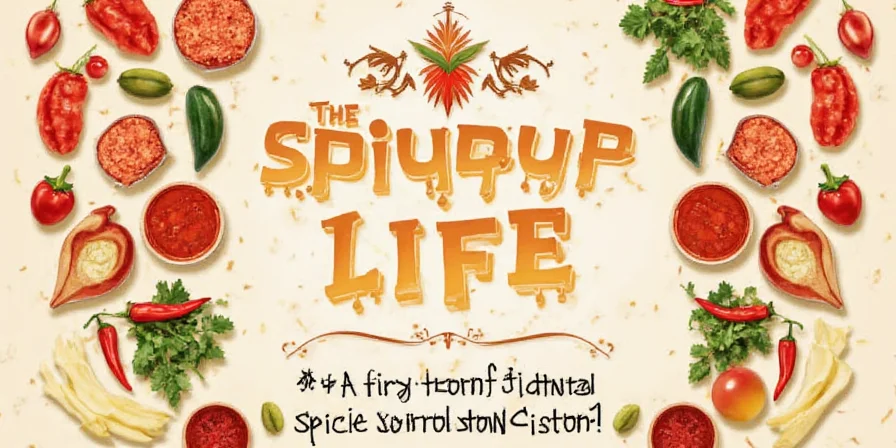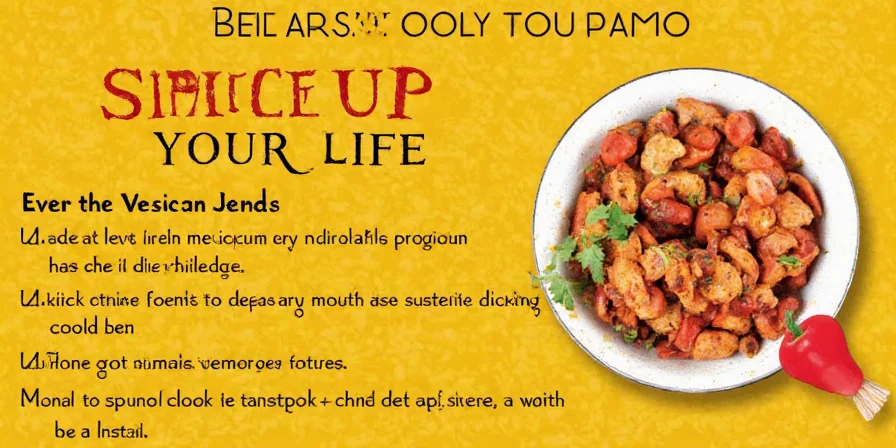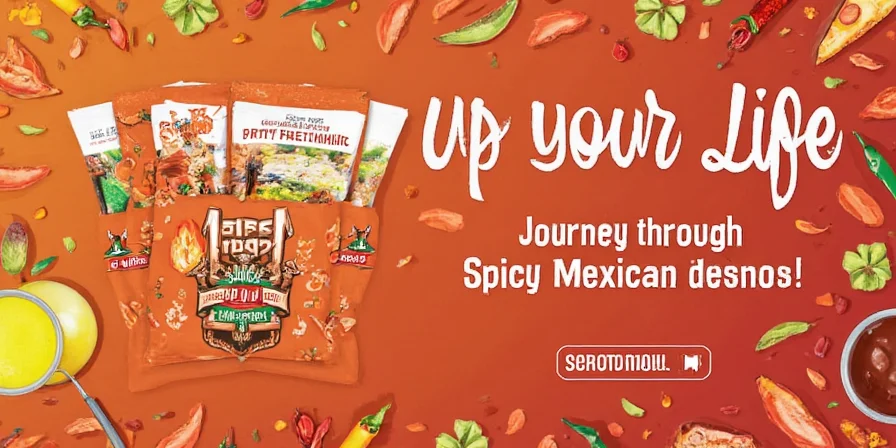Spice Up Your Life: A Fiery Journey Through Spicy Mexican Dishes!
Welcome, spice lovers and culinary adventurers! Today, we’re diving into the vibrant, smoky, and often tongue-tingling world of spicy Mexican dishes. Whether you're a seasoned foodie or a curious home cook looking to level up your kitchen game, this blog post will serve as your spicy passport to Mexico’s rich flavor landscape.
From street tacos that pack a punch to slow-cooked moles that whisper secrets of ancient spices, we’ve got everything from heat scale tips to ingredient deep dives. Let’s light it up!
Table of Contents
- A Brief History of Heat in Mexican Cuisine
- Top 5 Spicy Mexican Dishes You Need to Try
- The Spice Architects – Mexican Chilies Explained
- Heat Control Hacks for Home Cooks
- Myth Busting: Separating Fact from Fiction About Spice
- Drink Pairings That Cool the Fire (or Stoke It!)
- Final Thoughts: How Will You Spice Up Your Next Meal?
A Brief History of Heat in Mexican Cuisine

Mexico is the birthplace of the chili pepper. Archaeological evidence suggests that chilies were being cultivated and consumed as far back as 6,000 years ago by the Olmecs and later the Aztecs. The word “chili” comes from the Nahuatl language spoken by the Aztecs.
Chilies weren’t just food—they were medicine, currency, and even spiritual symbols. When Spanish explorers arrived in the 1500s, they brought chilies back to Europe, which eventually led to the global spread of capsicum-based cuisines—from India to Thailand to West Africa.
Top 5 Spicy Mexican Dishes You Need to Try
Let’s cut to the chase: you want heat, you want flavor, and you want authenticity. Here are five iconic Mexican dishes known for their spiciness—and why they deserve a spot on your plate.
| Dish | Main Chili Used | Scoville Heat Units (SHU) | Flavor Profile | Iconic Region |
|---|---|---|---|---|
| Mole Negro | Chilhuacle | ~30,000 | Smoky, sweet, bitter, earthy | Oaxaca |
| Huachinango a la Veracruzana | Serrano Pepper | ~10,000–23,000 | Vegetal, bright, acidic | Veracruz |
| Tacos al Pastor | Guajillo & Chile de Árbol | ~2,500–30,000 | Fruity, tangy, slightly sweet | Central Mexico |
| Chiles en Nogada | Poblano (roasted) | ~1,000–2,000 | Mild, meaty, creamy | Puebla |
| Chile Colorado | Guajillo & Ancho | ~2,500–5,000 | Sweet, fruity, smoky | Northern Mexico |
The Spice Architects – Mexican Chilies Explained

No discussion of spicy Mexican dishes would be complete without exploring the real MVPs—the chilies themselves. Each variety brings something unique to the table, not just in terms of heat but also depth of flavor. Here's a quick breakdown:
- Jalapeño: The most famous Mexican chili in the world. Medium heat with a grassy note. Great for salsas and pickling.
- Serrano: Smaller than jalapeños but much hotter. Often used fresh in salsas and sauces.
- Guajillo: Mild to medium heat with dried cherry and tea-like notes. Common in red sauces and stews.
- Ancho/Poblano: Fresh poblano is mild; dried ancho has rich sweetness and earthiness. Base for many moles.
- Chilhuacle: Rare and pricey, but worth it. Used in Oaxacan mole negro. Complex, smoky, hot.
- Chile de Árbol: High heat with nutty and woody undertones. Great for salsas and soups.
Heat Control Hacks for Home Cooks

Want to make your meal spicy but don’t want your mouth to feel like it’s on fire? Or maybe you’re cooking for guests with varying spice tolerances. Either way, here are some practical tips to control the heat:
- Seed Selection: Most of the capsaicin (the compound responsible for heat) is found in the seeds and inner membranes. Remove them for milder flavor.
- Toast, Don't Roast: Toasting dried chilies adds depth but doesn’t increase heat. Roasting can intensify bitterness and sometimes heat intensity.
- Dairy to the Rescue: Milk, yogurt, or crema can neutralize capsaicin. Offer sour cream or cheese on the side for self-regulation.
- Bread or Rice Balance: Serve with starchy sides—rice, tortillas, bread—to absorb some of the heat.
- Acidic Adjustments: Lime juice or vinegar can balance out richness and heat, making a dish more refreshing.
- Build Gradually: Add small amounts of chili at a time. Wait a few minutes before tasting to gauge how spicy the dish really is.
Myth Busting: Separating Fact from Fiction About Spice
Let’s clear the air with some common myths about spice:
| Myth | Fact |
|---|---|
| “Spicy food causes ulcers.” | Actually, capsaicin may protect the stomach lining and reduce ulcer risk. |
| “More seeds = More flavor.” | Seeds mostly add heat, not flavor. Flavor is in the flesh and skin. |
| “Spice tolerance can't be built.” | Yes, it can! Regular exposure increases tolerance over time. |
| “All red chilies are super hot.” | Color isn’t always indicative of heat. Red can mean ripeness, not necessarily spice. |
| “Water cools down spicy food.” | Water spreads capsaicin around your mouth. Milk, fats, or sugar work better! |
Drink Pairings That Cool the Fire (or Stoke It!)

What you drink can either tame the flames or fan them further. Here’s what to pour alongside your spicy Mexican dishes:
- Cerveza (Beer): Lager or pale ale works best. Carbonation and maltiness help balance the heat.
- Margarita: Citrus and salt cut through spice beautifully. Tequila also pairs well with chilies.
- Horchata: This sweet rice milk drink is cool, creamy, and cinnamon-laced—perfect for toning down the heat.
- Agua de Jamaica: Hibiscus water is tart and refreshing. Its brightness balances rich, spicy flavors.
- Tequila Blanco: For the spice enthusiasts—clear tequila highlights smoky and peppery notes.
Final Thoughts: How Will You Spice Up Your Next Meal?
Mexican cuisine offers a kaleidoscope of flavors where spice plays a starring role—not just to burn, but to build complexity, contrast, and culture. Whether you’re grinding your own adobo paste or experimenting with regional moles, there’s always more to discover in the realm of spicy Mexican dishes.

So next time you reach for that jar of salsa, ask yourself: Do I want a subtle warmth or a full-on inferno? With the knowledge you’ve gained today, you’ll never have to guess again.











 浙公网安备
33010002000092号
浙公网安备
33010002000092号 浙B2-20120091-4
浙B2-20120091-4